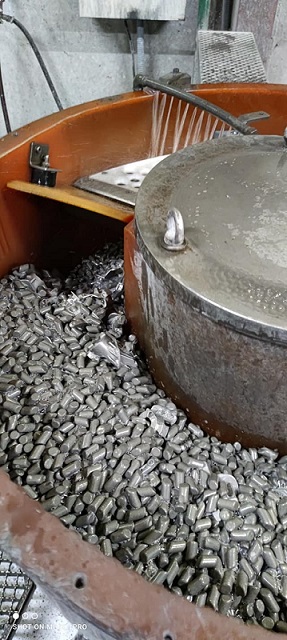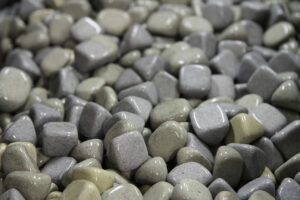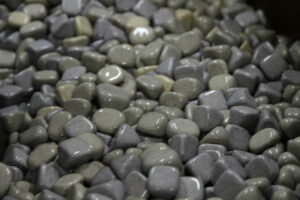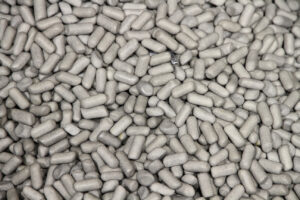Surface finishes
All the parts require a finish that ensures that possible burrs do not adhere to the parts, which allows their sharp edges to be modelled and minimize the burrs on the mould split lines.
With this, we achieve to avoid a manual revision one by one of all the parts, especially when it comes to large volumes.
However, if the requirements of our clients are stricter, the 100% control of parts is inevitable to deliver them under the high-quality standards required.
Difference between vibrated and shotblasting

Shotblasting
By projecting steel shot at high speed, it gives the blank state of a rough finish and homogeneous, due to the elimination of contaminants or debris mould. To obtain this effect, we have a shotblast machine with a stainless-steel balls (75% Ø0.3mm and 25% Ø0.4mm).
It is a process in which the parts are introduced into a rotating drum that allows the parts to be entirety smoothed with a rougher finish. This finish is recommended for painted parts because it allows better adherence and for parts with holes / windows because the proper steel shot can clean these areas more effectively.
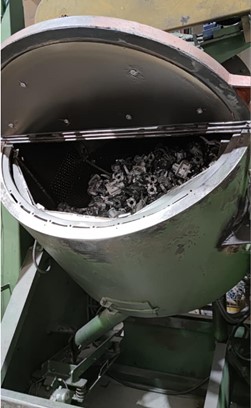
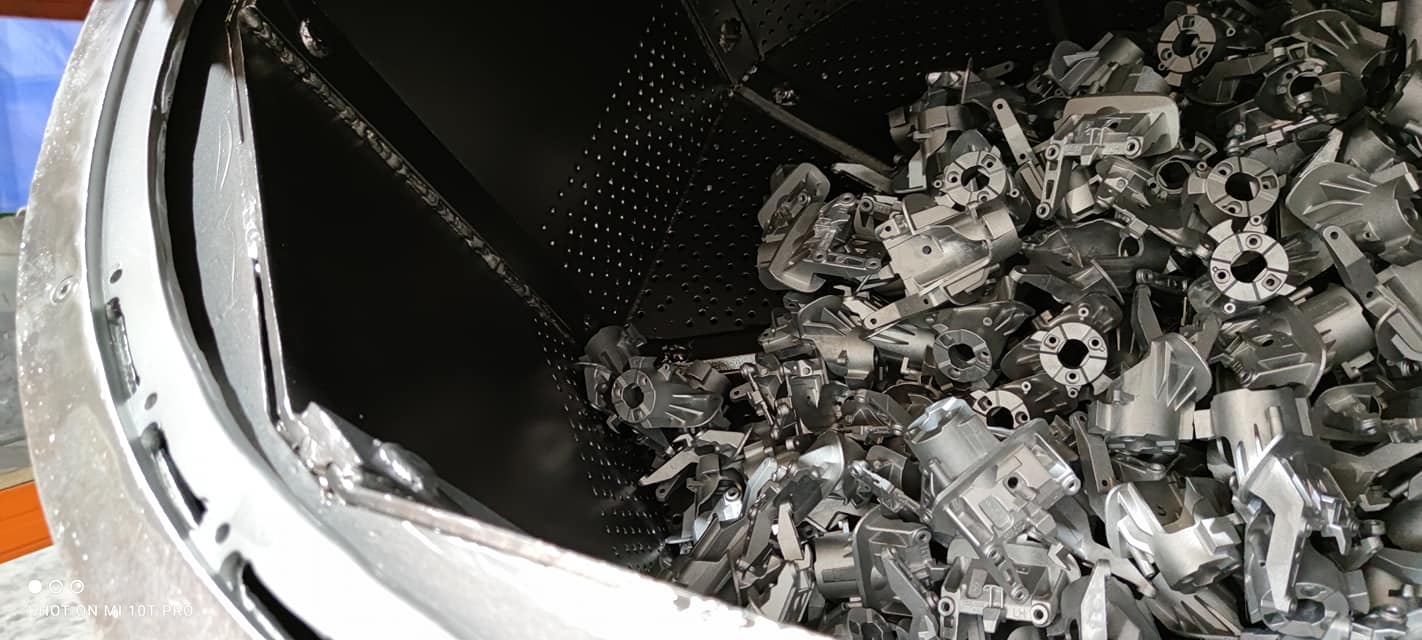
Vibrating
For parts that require low roughness, we offer the vibrating process, which is an operation that allows us to achieve finishes with an optimal polishing quality. This technique is carried out by means of vibration with abrasive materials inside a horizontal drum, thus improving the finish by eliminating edges, burrs, oil from a possible machining and giving the part a greater uniformity surface.
At JULCAR, we can carry out vibration polishing with different finishing chips that can be made of plastic (less aggressive), ceramic (more aggressive) and of different shapes (pyramidal, cylindrical, etc.), to which in addition we can complement them with a cleaning with water to eliminate impurities. The appropriate choice will depend on the geometry of the piece.
